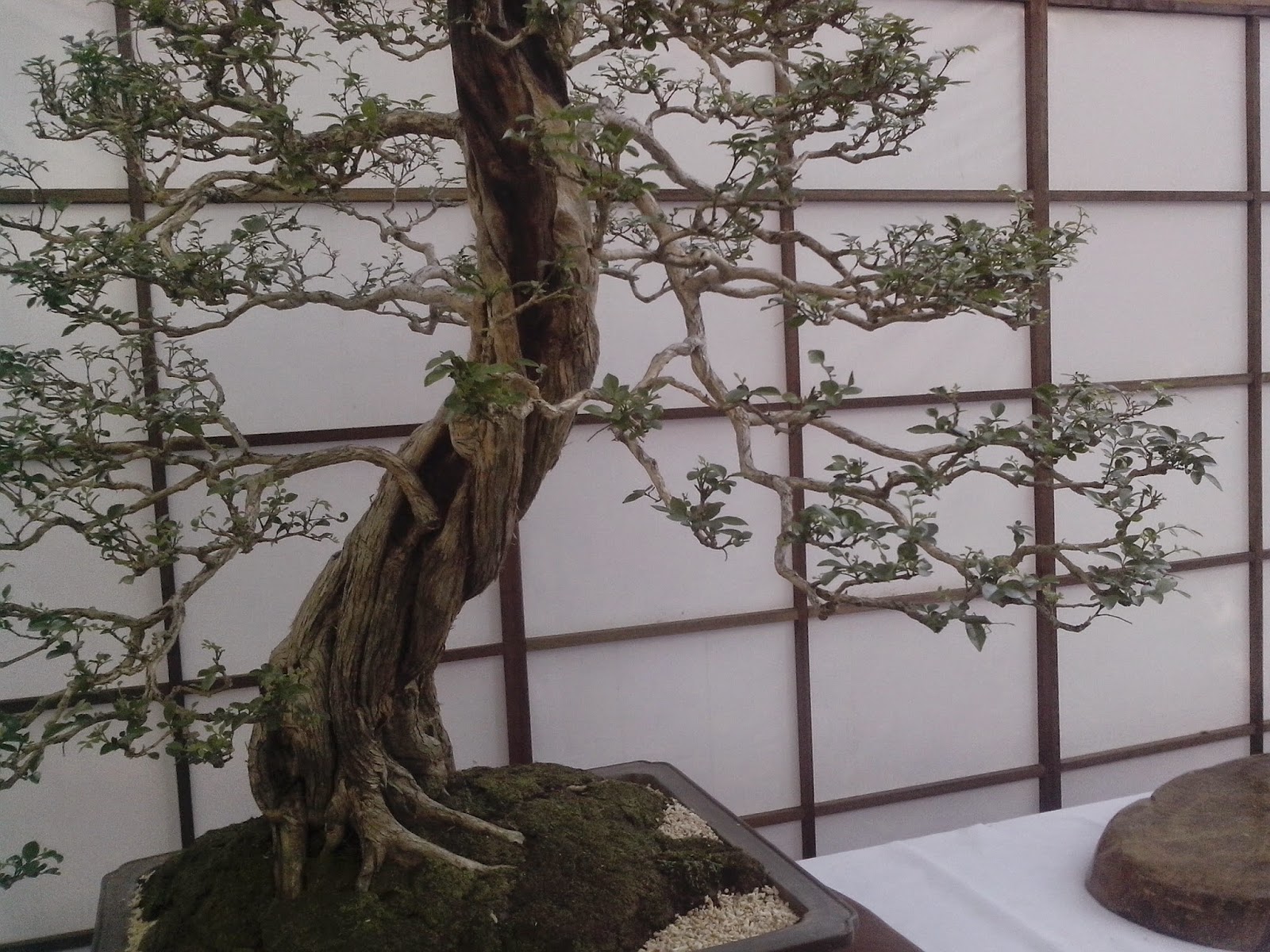I recently went to the opening of the "Festival of Bonsai, Cactus and Ikenobo" here in Quezon City Memorial Circle. They have great displays. Better believe it! I like 'em, however Ok, to let you know, I'm a little bit ignorant when it comes to bonsai - and what are these Sueseki and Penjing?
In all honesty, I would put every one of them in one basket: Midget trees with Japanese and Chinese touch...
In all honesty, I would put every one of them in one basket: Midget trees with Japanese and Chinese touch...
Good thing I did some research.
BONSAI
More or less, bonsai are little trees and... uh, hold up a moment there. Bonsai is an art and bonsai is a Japanese word that means "planted in a container." The expression "bon" implies a pot and "sai" implies plantings.
It was derived from the early Chinese art of penjing (which we will be exploring after this).
The ultimate objective of growing a Bonsai is to make a scaled down yet realistic representation of nature as a tree. Bonsai are not genetically dwarf plants. In fact, any tree species can be utilized to grow one.
Bonsai does not oblige genetically dwarf trees, yet rather relies upon growing little trees from standard stock and seeds. Bonsai utilizes techniques such as pruning, root reduction, potting, defoliation, and grafting to create little trees that mimic the shape and style of fully grown, full-size trees.
During the Kamakura period (1185–1333), the period in which Japan adopted most of China's culture, the art of growing trees inside containers were introduced in Japan. Also, the Japanese have perfected the art of Bonsai because of the impact of Zen Buddhism.
Around the year 1800, a gathering of scholars from China assembled in the city of Osaka to discuss later styles in miniature trees. The dwarf trees were renamed as "bonsai."
Penjing (or penzai) actually means potted landscape. It can be traced back as far as 1,900 years to the Han Dynasties. It has been discovered portrayed in paintings dating from the Tang Dynasty, around 706ce.
Penjing can be divided into two categories: (1.) Shansui portrays scene of mountains and water, emphasizing rocks and mountain scenes and (2.) Shumu (shuomo) or tree Penjing which are more related with the Japanese funka style Bonsai. This category includes one or a few trees being the primary subject and uses complexities, yin and yang, to create tree composition.
Penjing can be divided into two categories: (1.) Shansui portrays scene of mountains and water, emphasizing rocks and mountain scenes and (2.) Shumu (shuomo) or tree Penjing which are more related with the Japanese funka style Bonsai. This category includes one or a few trees being the primary subject and uses complexities, yin and yang, to create tree composition.
Suiseki
Suiseki is about stones.
Suiseki (Sui = water, Seki = stone) are small naturally occurring or shaped rocks which are traditionally appreciated.
These stones are considered by hobbists as extraordinary stones which can be found in nature, they must be expressive stones and have special shape, color and surface to be classified as Suiseki.
There are two types of stones that can be considered: One stone must reflect scenes, for example, mountains, lakes or streams, while other stones must have shapes that resemble animals or human-made artifacts.
The stones must be of natural origin and are found in streams, seas and karst regions. You are not permitted to be reshaped the stone, except the slicing of stones to have a level base so they can be put in concordance on Daiza, suiban and Doban, to be represented in a fitting manner.
Suiseki (Sui = water, Seki = stone) are small naturally occurring or shaped rocks which are traditionally appreciated.
These stones are considered by hobbists as extraordinary stones which can be found in nature, they must be expressive stones and have special shape, color and surface to be classified as Suiseki.
There are two types of stones that can be considered: One stone must reflect scenes, for example, mountains, lakes or streams, while other stones must have shapes that resemble animals or human-made artifacts.
The stones must be of natural origin and are found in streams, seas and karst regions. You are not permitted to be reshaped the stone, except the slicing of stones to have a level base so they can be put in concordance on Daiza, suiban and Doban, to be represented in a fitting manner.
 |
| Don't ask... |



































No comments:
Post a Comment